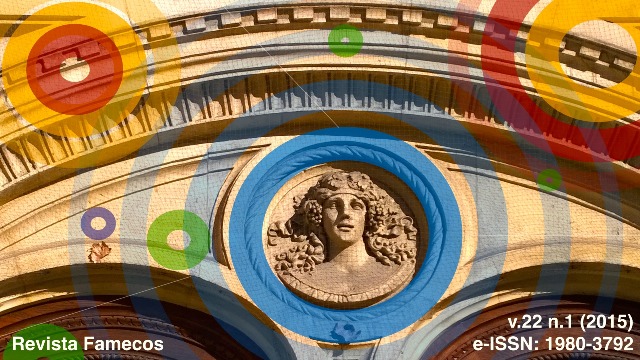House’s creative destruction: Order and disorder under the guise of security
DOI:
https://doi.org/10.15448/1980-3729.2015.1.20892Keywords:
Fiction, Reality, Mental pictureAbstract
We are presenting here a reading of House, a popular television medical drama, through the prism of the imaginary. This show juggles with reality and fiction in such a way that it is sometimes difficult for us to make a distinction between what we know about the medical environment and what images and words suggest. House’s main and eponymous character, Dr Gregory House, appeals to the viewer through his ambivalence. Indeed, he is both obnoxious – often spiteful, callous and unsympathetic towards his patients, his close friends and colleagues, always flouting hospital rules – and captivating in the practice of his profession as well as in the relationships he maintains with the members of his team. This ambivalence makes him the author of a “creative destruction”, which takes us from one world of feelings to another, using our emotions. Thus a dialogical process takes place, which can be perceived using the framework of interpretation provided by imaginary sociology, in particular its structures elaborated by Gilbert Durand.
Downloads
References
DURAND, Gilbert. (1960). Les Structures Anthropologiques de l’Imaginaire. Paris: Dunod, 1992.
DURAND, Gilbert. Introduction à la mythodologie. Mythes et sociétés. Albin Michel, 1996.
FOUCAUL, Michel. Naissance de la clinique. Paris: PUF, 1963.
GIRARD, René. La violence et le sacré. Paris: Grasset, 1972.
GOFFMAN, Erving. Asile. Paris: Minuit, 1968.
JORON Philippe. La communication sacrificielle. Les Cahiers de l’IRSA, Violences et communication, n. 6, p. 245-264, 2006.
MAFFESOLI, Michel. L’instant éternel, le retour du tragique dans les sociétés post-modernes. Paris: Denoël, 2000.
PARSONS, Talcott. The patient and the mental hospital. New York: The free press, 1957.
RENARD, Jean-Bruno et Véronique Campion-Vincent. De Source sûre, Nouvelles rumeurs d’aujourd’hui. Paris: Payot, 2002.
RENARD, Jean-Bruno. Le Merveilleux. Paris: Éditions CNRS, 2011.
SOUTEYRAND, Yves. L’hôpital stratège. Paris: John Libbey Eurotext, 1996.
Downloads
Published
How to Cite
Issue
Section
License
Copyright
The submission of originals to Revista Famecos implies the transfer by the authors of the right for publication. Authors retain copyright and grant the journal right of first publication. If the authors wish to include the same data into another publication, they must cite Revista Famecos as the site of original publication.
Creative Commons License
Except where otherwise specified, material published in this journal is licensed under a Creative Commons Attribution 4.0 International license, which allows unrestricted use, distribution and reproduction in any medium, provided the original publication is correctly cited.






